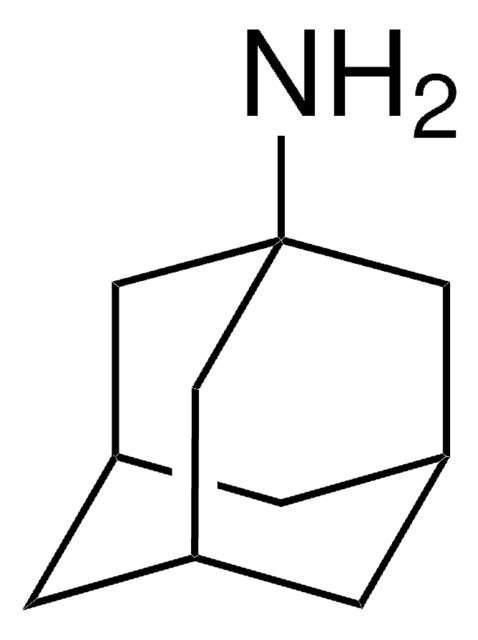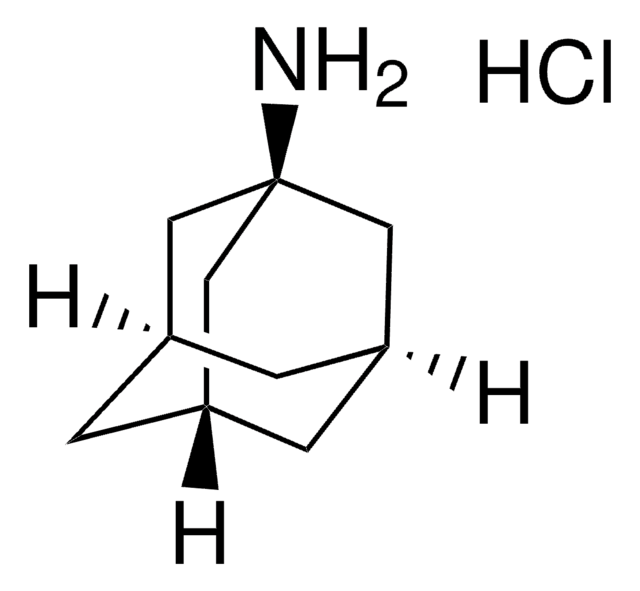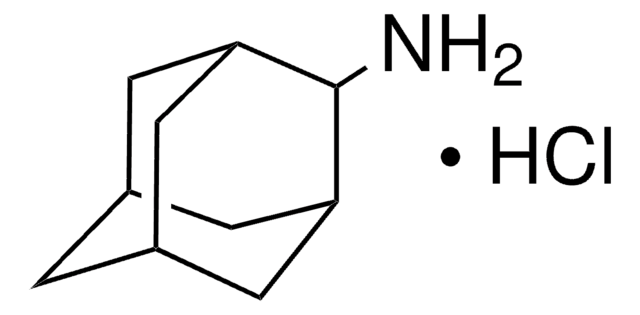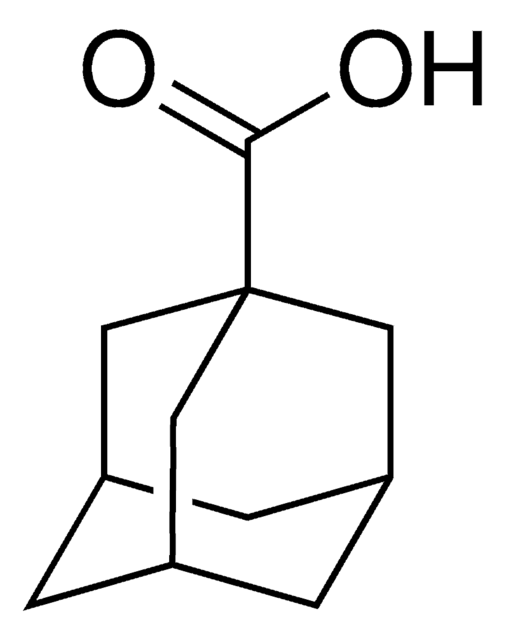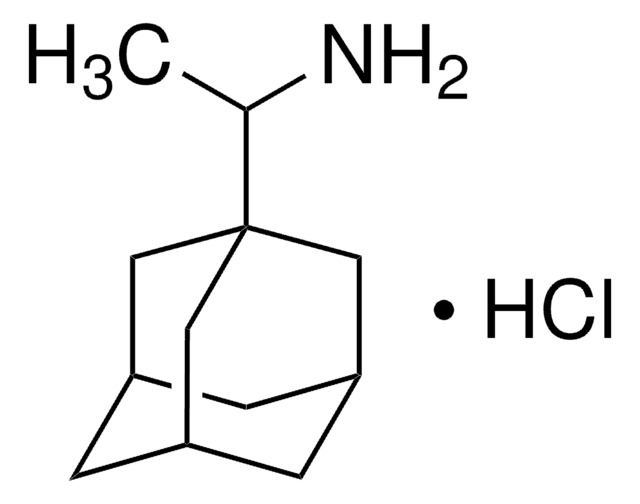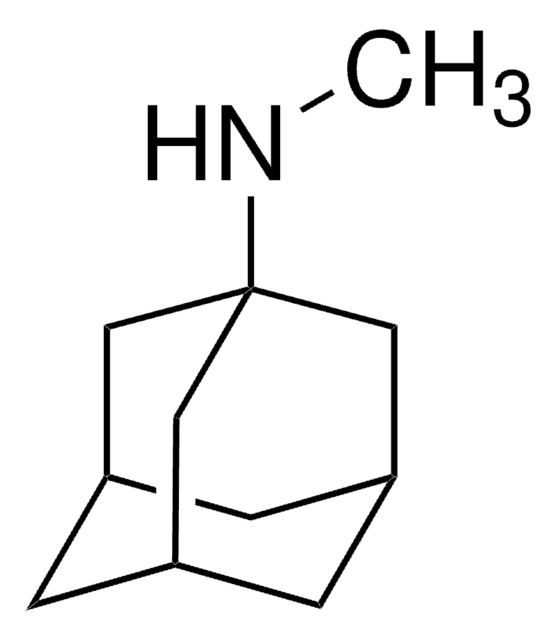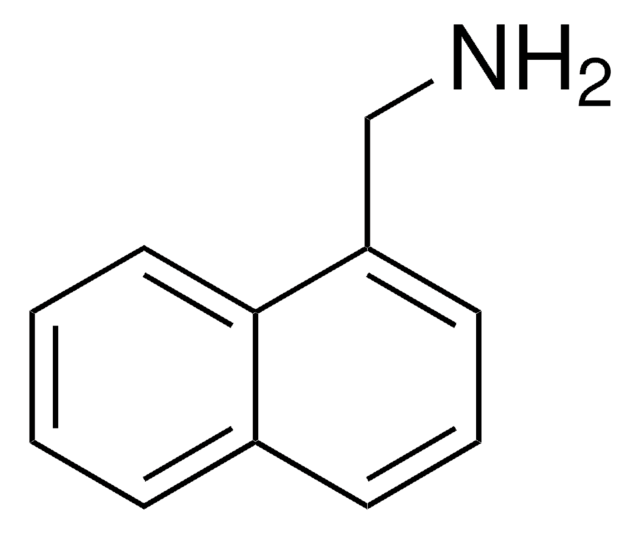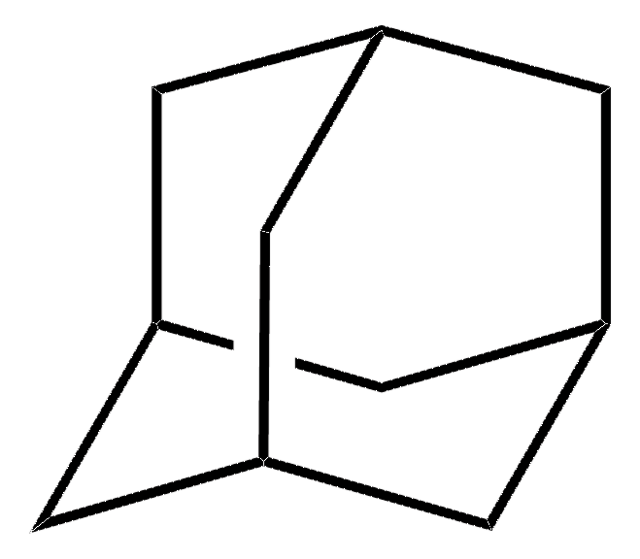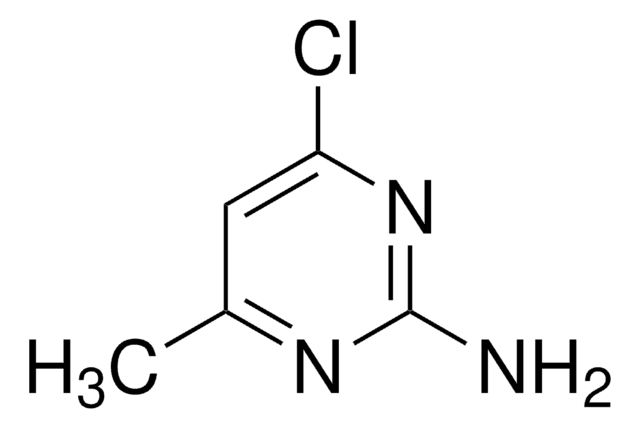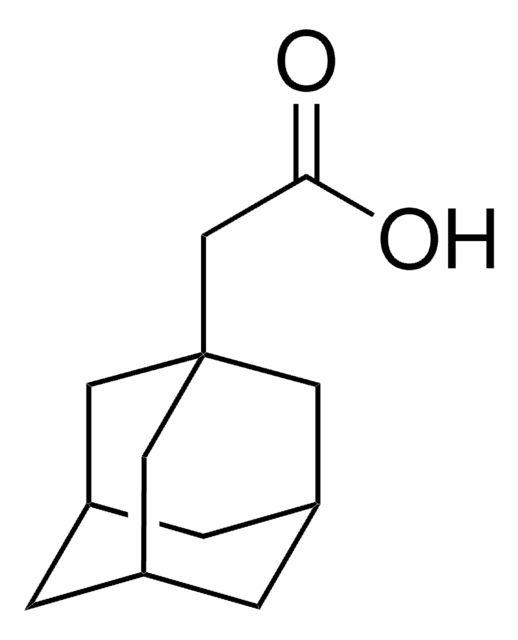Wszystkie zdjęcia(1)
Kluczowe dokumenty
180378
1-Adamantanemethylamine
98%
Synonim(y):
1-(Aminomethyl)adamantane
Zaloguj sięWyświetlanie cen organizacyjnych i kontraktowych
About This Item
Wzór empiryczny (zapis Hilla):
C11H19N
Numer CAS:
Masa cząsteczkowa:
165.28
Numer MDL:
Kod UNSPSC:
12352100
Identyfikator substancji w PubChem:
NACRES:
NA.22
Polecane produkty
Próba
98%
Formularz
liquid
współczynnik refrakcji
n20/D 1.5137 (lit.)
bp
83-85 °C/0.3 mmHg (lit.)
gęstość
0.933 g/mL at 25 °C (lit.)
grupa funkcyjna
amine
ciąg SMILES
NCC12C[C@H]3C[C@H](C[C@H](C3)C1)C2
InChI
1S/C11H19N/c12-7-11-4-8-1-9(5-11)3-10(2-8)6-11/h8-10H,1-7,12H2/t8-,9+,10-,11-
Klucz InChI
XSOHXMFFSKTSIT-BIBSGERRSA-N
informacje o genach
human ... GRIN2A(2903)
Powiązane kategorie
Opis ogólny
1-Adamantanemethylamine is a large amine present on the wall of 6,7-diaminoquinoxaline. The thermodynamic complex formation constant of 1-adamantanemethylamine was studied.
Ta strona może zawierać tekst przetłumaczony maszynowo.
Hasło ostrzegawcze
Danger
Zwroty wskazujące rodzaj zagrożenia
Zwroty wskazujące środki ostrożności
Klasyfikacja zagrożeń
Eye Dam. 1 - Skin Corr. 1B
Kod klasy składowania
8A - Combustible corrosive hazardous materials
Klasa zagrożenia wodnego (WGK)
WGK 3
Temperatura zapłonu (°F)
197.6 °F - closed cup
Temperatura zapłonu (°C)
92 °C - closed cup
Wybierz jedną z najnowszych wersji:
Masz już ten produkt?
Dokumenty związane z niedawno zakupionymi produktami zostały zamieszczone w Bibliotece dokumentów.
Klienci oglądali również te produkty
Shengxiong Xiao et al.
Chemical communications (Cambridge, England), 46(14), 2459-2461 (2010-04-10)
The condensation of a Kemp's triacid derivative with a diamino resorcinarene yielded a cavitand with the deepest cavity prepared to date featuring an inwardly-directed carboxylic acid. The extended 6,7-diaminoquinoxaline wall bearing the acid allowed accommodation of large amines, such as
Seunghyun Lee et al.
Colloids and surfaces. B, Biointerfaces, 147, 281-290 (2016-08-16)
Albumin has been viewed as one of the most attractive biomacromolecules for making nanoparticulate systems due to its biocompatibility and chemical functionality. Thus far, albumin nanoparticles (NPs) are prepared by several limited methods, such as, desolvation, emulsification or high-pressure homogenization.
Joachim F R Van Guyse et al.
Polymers, 13(3) (2021-02-04)
Smart or adaptive materials often utilize stimuli-responsive polymers, which undergo a phase transition in response to a given stimulus. So far, various stimuli have been used to enable the modulation of drug release profiles, cell-interactive behavior, and optical and mechanical
Haibao Jin et al.
Biopolymers, 110(4), e23258-e23258 (2019-01-25)
Due to the branched structure feature and unique properties, a variety of star-shaped polymers have been designed and synthesized. Despite those advances, solid-phase synthesis of star-shaped sequence-defined synthetic polymers that exhibit hierarchical self-assembly remains a significant challenge. Hence, we present
Nasz zespół naukowców ma doświadczenie we wszystkich obszarach badań, w tym w naukach przyrodniczych, materiałoznawstwie, syntezie chemicznej, chromatografii, analityce i wielu innych dziedzinach.
Skontaktuj się z zespołem ds. pomocy technicznej